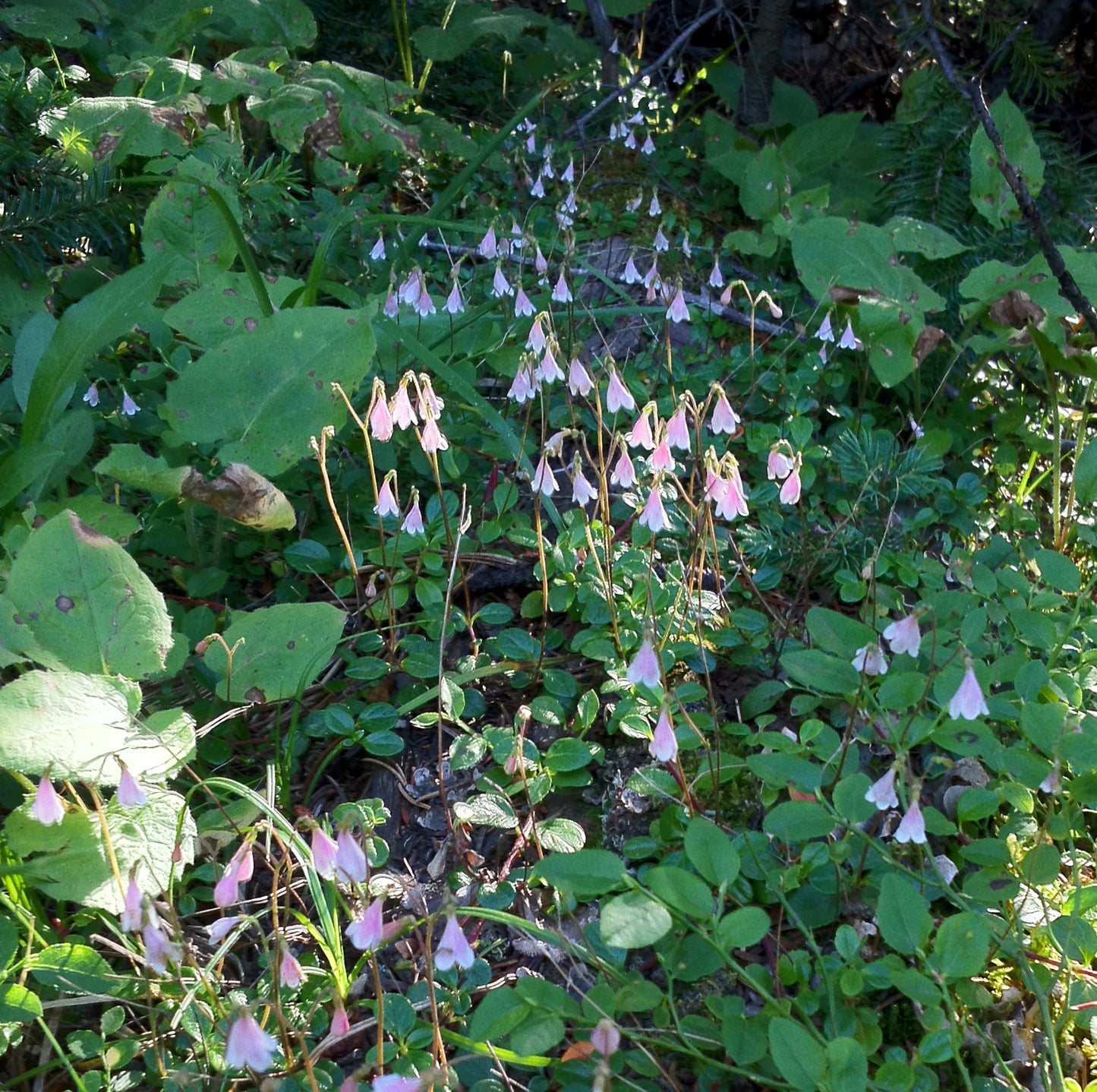Wild About Flowers
Linnaea borealis - Twinflower
Linnaea borealis - Twinflower
Couldn't load pickup availability
Twinflower is a low-growing, trailing perennial with delicate pairs of pale pink, bell-shaped flowers that dangle gracefully from slender stems. Its evergreen, oval-shaped leaves form a soft, carpet-like mat along the forest floor, adding a lush, natural texture to shaded spaces. Blooming in early summer, its lightly fragrant flowers attract native bees and other pollinators, including long-tongued bees specially adapted to reach its deep, bell-shaped blooms. Some birds may forage for insects among its foliage, and while not a preferred browse, young shoots may occasionally be eaten.
Thriving in cool, moist soils and dappled shade, Twinflower is well suited for woodland gardens, shaded borders, and naturalized plantings. It spreads gently by creeping stems, creating a dense, low-growing ground cover without becoming invasive. Its low-growing habit and slightly bitter foliage offer some protection from browsing, though deer may occasionally nibble young growth in spring.
Bloom Times & Plant Sizes
Bloom Times & Plant Sizes
Important Information - The "Bloom Period" is an indicator of the time period within which the wildflowers will bloom and does not describe the time period that a single plant will bloom. The "Sizes" listed are intended to be a general guideline to consult during plant selection. - Plant growth and bloom times will vary depending on geographical location & individual site conditions.
Edible & Medicinal Info Disclaimer
Edible & Medicinal Info Disclaimer
The Edible & Medicinal information on this site is for informational purposes only and should not be acted on without thorough research and professional guidance. We are not responsible for any adverse effects resulting from the use of or misidentification of plants.
Share




Plant Specifics
Seeds Per Pack
Seed packs are currently unavailable.
Light Conditions
- Part Shade
- Shade
Soil Conditions
- Moist
- Rich
- Loam
- Well Drained
- Sandy
Height
- Under 6"
Width
- Mat Forming
Bloom Colour
- Pink
- White
Month of Bloom
- June
- July
- August
Vigorousness
- Slow
- Moderate
Deer Resistance
- Moderate
Features
- Butterflies
- Bees
- Fragrant
- Used as Groundcover
- Urban Spaces
- Rural Spaces
- Medicinal Properties
Chinook Exposure
- Moderate
- Sheltered
Distribution Info
Linnaea borealis is native to all Canadian provinces and is found across the northern US. It thrives in cool, shaded forests, mossy woodlands, and along moist, well-drained slopes, often forming dense mats in coniferous forests.
Traditional Edible & Medicinal Info
Linnaea borealis was traditionally used for pain relief and inflammation, with infusions of leaves and stems taken to reduce fevers and ease joint pain. Some Indigenous groups used tea from the plant to treat colds, coughs, and lung ailments, while crushed leaves were applied as poultices for cuts, bruises, and skin irritations. It is not considered toxic, but excessive consumption may cause mild digestive upset.




